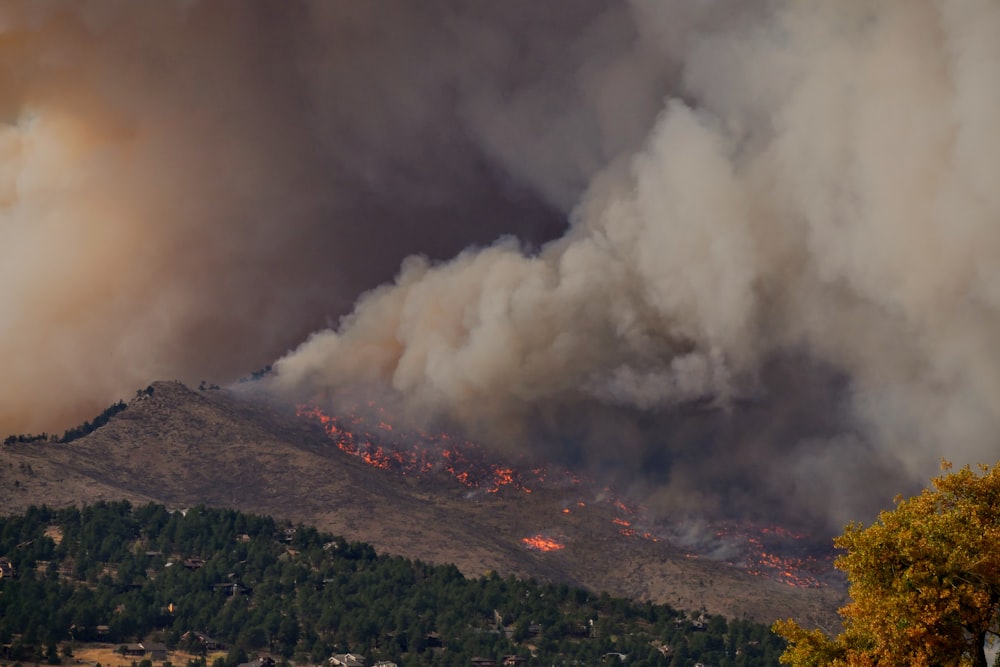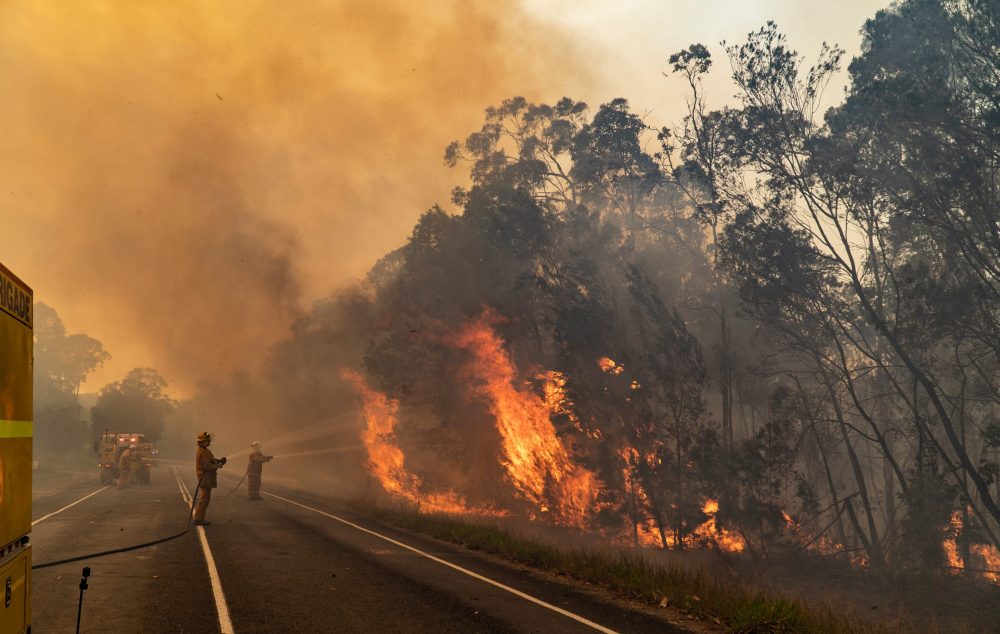WildFire is not a new thing for Australia. The Australian landscape evolved because of fire. The survival of many plant species is depending on fire. There is a variety of species that adapted and even getting benefit from the fire in Australia. The Australian landscape was designed by fire in a way to prevent wildfire and also to provide resources. We know that the root cause of any natural disaster is somehow linked with global warming and overall climate change. Global warming is causing a slight rise in temperature, which leads to a decrease in rainfall in some areas of Australia. This phenomenon leads to an increase in the frequency, extent, and intensity of the wildfire in the last decades. These disturbed fire patterns increased their harmful effect on biodiversity.
According to Geoscience Australia, the leading natural reason behind these wildfires is lightning coupled with human and other biological activities. According to CSIRO, wildfire mostly breaks due to scorching weather and vegetation. But it is required to figure out the major cause of their ignition, whether lightning or accidental fire? When these factors combine with speedy winds, it results in a wildfire.
NSW RFS reported that lightning is the reason for the Gospels’ mountain fire which burnt 512000 hectares. The media reported Kangaroo island fire also started with lightning. It is concluded that in 2019-20 fires, most of the fires begin with lightning. The fires in Tasmania in December 2019 are because of deliberately lit fires results in 21000 to 35000 hectares burned.
Studies proposed that by 2050, the risk of wildfire can increase up to 25%. It is a need of an hour to understand their changing pattern, cause, and impact on biodiversity for better management of the disaster they caused.

Australia has faced extensive and continuous bushfires from June 2019 to Feb 2020. These wildfires are unexpectedly prolonged, and that’s why named Black Summer or season from hell. The outbreaks of 2019-20 adversely affected the NSW and Sydney. Overall, 2019 in Australia 2019 was recorded as driest and scorching. The FFDI (Forest Fire Danger Index), which calculates the intensity of danger caused by the wildfire in Australia, recorded the spring season in 2019 wildfire as the highest rate.
In 2019, about 15000 fires were reported in different areas, which collectively damage 19 million hectares of Australian land. This area is larger than the total burnt area of Amazon and California in recent fire events; an annual wildfire is widespread in Australia, especially the savannahs of northern tropical, last year damage the vegetation. An increase in temperature and extended drought conditions have worsened the condition at the start of November 2019.
In January 2020, heavy rainfall decreased the fires in some areas but unable to extinguish the fires completely. Drought, hotter temperatures combine with high winds increased the fires to a dangerous level again at the start of February 2020. This is followed by heavy rainfall in mid of the Feb 2020 results in the complete extinguishment of fires in NSE, but victoria was still facing the bushfire. All the fires completely stopped in March after nine months of prolonged bushfire season.
In 2019-20, wildfires affected millions of people living in these areas with 33 deaths and thousands of homes burned. The smoke from these prolonged fires causes air pollution in major cities, and even the smoke reaches over New Zealand. Hazardous air pollution causes about 400 deaths and hundreds of people hospitalized because of asthma, cardiovascular and respiratory issues. These fires released about 900 million tonnes of CO2 emissions. According to NASA, these fires produced a considerable amount of smoke, taking one complete circle of the Globe. In current times Sydney and Canberra are listed among the top 10 most polluted cities.
According to WWF estimation, about 3 billion native vertebrates are present in the 2019-20 bushfire areas, which include mammals, reptiles, birds, and frogs. These extended bushfires also affected endangered species, wildlife, ecological communities, and heritage Areas. Threatened species lost their required habitat because of these fires. The heritage sites like Gondwana InDuring 2019-20, many historical places like Greater Blue Mountain, and Old Great North Road were destroyed due to the wildfires. Many modeling and studies are carried out to explain the actual damage caused by 2019-20 fires on fauna and flora. However, much data is still an estimation from past fire events and requires detailed analysis and expert opinions.
Australia was able to come out of this emergency with the help of many Philanthropic and Governmental support. CDP (Center of Disaster Philanthropy) supports it with their global recovery funds; this helps donors meet the challenges presented by the global crises. These donations then transferred to various organizations working in the country to overcome the current emergency, just like the Australian Red Cross Society awarded $336,000 to help the human life affected by bushfires. It also includes three years of bushfire recovery programs.
FRRR (Foundation of Rural and Regional Renewal) awarded $500,000 to help at the community level and invest in community projects. This helps in the recovery of rural and remote areas of the country affected by bushfires.
WWF was also awarded $1.19 million for long-term recovery projects. This is actually for wildlife and restoration of the environment and natural habitat. The federal government of Australia announced in Jan 2020 the formation of the National Bushfire Recovery Agency. The government also initiates $A2 billion for recovery and helping the farmers, families, and businesses affected by bushfires.
The ongoing demand is the requirement of resources and funds for rebuilding communities and structure which resist the bushfires.
References:
- https://www.bbc.com/news/world-australia-50951043
- https://www.theverge.com/2020/1/3/21048891/australia-wildfires-koalas-climate-change-bushfires-deaths-animals-damage
- WWF_Impacts-of-the-unprecedented-2019-2020-bushfires-on-Australian-animals%20.pdf

Samia Khanum is an M.phil in Botany (Plant Sciences) from the Department of the Botany University of Punjab. Her research work is based on Mushroom Biodiversity, Taxonomy, and Identification. She’s a science enthusiast and loves to write about plant sciences, the impact of environmental factors on plants, Mycology, Autecology, Synceology, Microbiology, Agronomy, Crop Sciences, and Tissue Culture.

